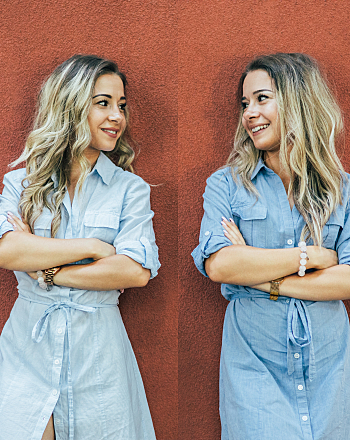Chronic pain researcher Dr Tasha Stanton was announced as one of the Top Five under 40 science communicators for 2016, an initiative created by ABC Radio National and the University of New South Wales.
Dr Stanton is a postdoctoral research fellow working with the Moseley group, looking at chronic pain. Specifically, what is pain? Why do we have it? And why doesn’t it go away?
Her current research is focussed on sensory processing in chronic pain, what influences levels of pain, and how visual illusions may be used to help create new treatments for sufferers of chronic pain
“I love my research area because I get to work at the cutting edge of pain neuroscience and I get to evaluate the implications of these new discoveries in people that have chronic pain,” she says. “To me this is the perfect combination of exciting, novel research that also has real world impact. As scientists, we are only beginning to understand the complexity of the conscious experience of pain. I have the opportunity to contribute to this understanding as part of my job — it doesn’t get better than that!”
This year, six winners were announced instead of five due to the high calibre of entrants. They will undertake a 10-day media program as Scientists in Residence at Radio National. Here they will gain an insider’s look at how science stories are made at RN and work with a mentor as they create a media story for an online or radio audience.
Dr Stanton has received over $1.7m in competitive research funding to date, including a highly renowned Canadian Institute of Health Research Postdoctoral Training Fellowship (2011−2014).
Her fellow Science Communicators are:
- Gail Alvares, University of Western Australia: Psychologist investigating novel and affordable ways to improve the quality of lives of children with autistic spectrum disorder.
- Adam Bumpus, University of Melbourne: Geographer working at the intersection of technological innovation studies and economic geography on the role of technology in climate change solutions.
- Niraj Lal, Monash University: Physicist using nanophotonics to increase the efficiency of next-generation solar cells, aiming for double the efficiency that’s currently on roof tops.
- Jodie Rummer, James Cook University: Marine biologist tracking the athletic capacity in fish to determine how climate change will affect the future of ecosystems and biodiversity.
- Kirsty Short, University of Queensland: Immunologist researching the mechanisms that drive increased susceptibility to the influenza virus in certain subsets of the population (pregnant women and asthmatics).




